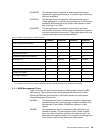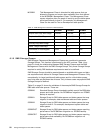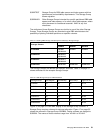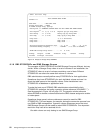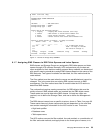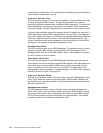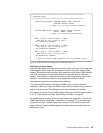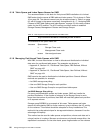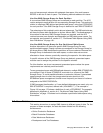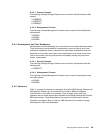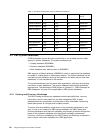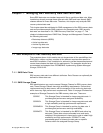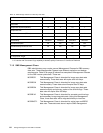
Managing DB2 Databases with SMS 57
may not leave enough volumes with adequate free space; this could cause a
REORG to fail due to lack of space. The following methods address this issue.
Use One SMS Storage Group for Each Partition
A one-volume SMS Storage Group can be defined for each partition. The ACS
routine assigns to each partition its corresponding Storage Group. This method is
similar to creating a DB2 defined partitioned table space, using one STOGROUP
for each partition. One SMS Storage Group is defined for each DB2 STOGROUP.
The advantage of this method is strict data set placement. The DB2 administrator
will have the same disk distribution as he has without SMS. The disadvantage of
this method is that many SMS Storage Groups are required, and the ACS
routines become more complex and dependent on DB2 table space names. For
an example, see Appendix A, section A.7, “Partitioned Table Spaces Using SMS,
User Distribution” on page 181.
Use One SMS Storage Group for One Partitioned Table Space
Another alternative is to have one specific SMS Storage Group for each
partitioned table space. Enough volumes are assigned to the Storage Group for
all the partitions. SMS distributes the partitions on those volumes. Because this
Storage Group is dedicated to the table space, no other data sets are ever
allocated on these volumes, practically reserving the space for this table space.
If specific volumes of the SMS Storage Group are desired, guaranteed space
must be used to assign the partitions to the specific volumes.
For this situation, we do not recommend guaranteed space unless the space
requirements are relatively small and static.
To use guaranteed space with DB2 defined data sets, multiple DB2 STOGROUPs
are required. Each of these STOGROUP must refer to a volume of the SMS
Storage Group. To avoid possible allocation or extension failures, if guaranteed
space storage class is used, the storage administrator should run the
DFSMShsm space management function more frequently on the set of volumes
assigned to the DB2 STOGROUPs.
If SMS manages the allocation, or if user defined tablespaces are used, only one
DB2 STOGROUP is required, defined with (VOLUMES "*"). The example in
Figure 100 on page 172 shows a definition of such a STOGROUP. The example
described in Appendix A, section A.6, “Partitioned Table Space Using SMS
Distribution” on page 178 shows how to allocate a partitioned table space using
this method.
6.2 User Databases
This section shows how to assign SMS classes to different types of data. For the
purpose of these examples, the data has been divided into the following
environments:
• Online Production Databases
• Batch Production Databases
• Data Warehouse Databases
• Development and Test Databases



